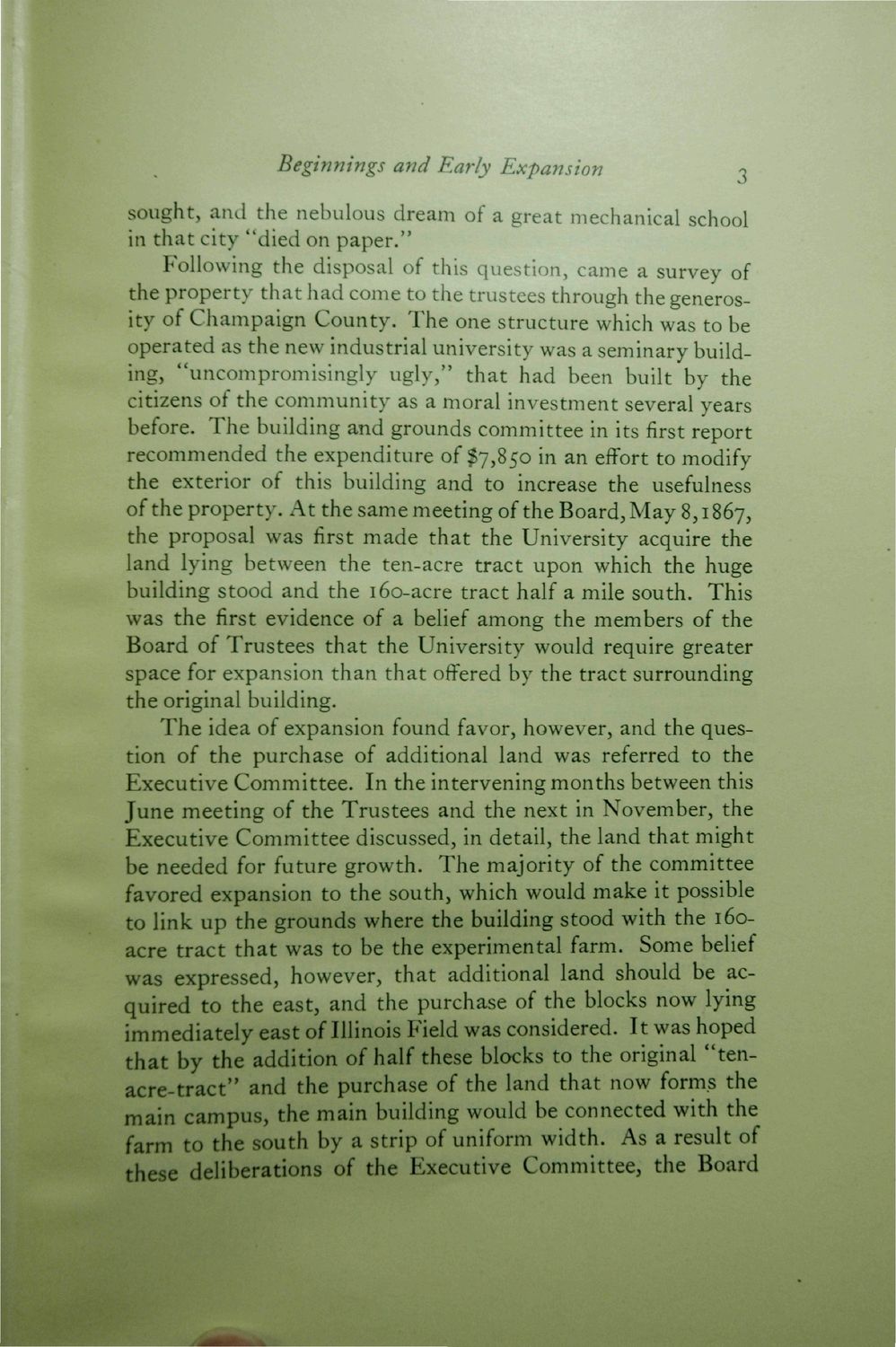| |
| |
Caption: Book - 30 Year Master Plan (Tilton & O'Donnell)
This is a reduced-resolution page image for fast online browsing.

EXTRACTED TEXT FROM PAGE:
Beginnings and Early Expansion 3 sought, and the nebulous dream of a great mechanical school in that city "died on paper." Following the disposal of this question, came a survey of the property that had come to the trustees through the generosity of Champaign County. The one structure which was to be operated as the new industrial university was a seminary building, "uncompromisingly ugly," that had been built by the citizens of the community as a moral investment several years before. The building and grounds committee in its first report recommended the expenditure of $7,850 in an effort to modify the exterior of this building and to increase the usefulness of the property. At the same meeting of the Board, May 8,1867, the proposal was first made that the University acquire the land lying between the ten-acre tract upon which the huge building stood and the 160-acre tract half a mile south. This was the first evidence of a belief among the members of the Board of Trustees that the University would require greater space for expansion than that offered by the tract surrounding the original building. The idea of expansion found favor, however, and the question of the purchase of additional land was referred to the Executive Committee. In the intervening months between this June meeting of the Trustees and the next in November, the Executive Committee discussed, in detail, the land that might be needed for future growth. The majority of the committee favored expansion to the south, which would make it possible to link up the grounds where the building stood with the 160acre tract that was to be the experimental farm. Some belief was expressed, however, that additional land should be acquired to the east, and the purchase of the blocks now lying immediately east of Illinois Field was considered. It was hoped that by the addition of half these blocks to the original "tenacre-tract" and the purchase of the land that now forms the main campus, the main building would be connected with the farm to the south by a strip of uniform width. As a result of these deliberations of the Executive Committee, the Board
| |